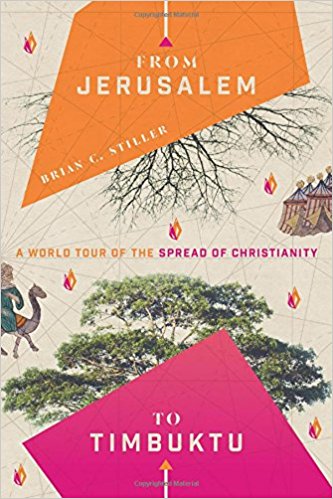Pagans and Christians in the City - A Review
There are times when the so-called Culture War is spoken of as if it were an invention of the 1980’s Moral Majority. Since many of the participants in that movement were and are Christian Fundamentalists, and fundamentalists of any type are easy to mock, this seems to answer the question and we can simply thank God (or our gracious non-theism) that we aren’t like those people.
But culture wars, as it were, were not invented in the 1980’s. Nor were they invented in the 1960’s, nor the ‘20’s. They are a fact of human history. Wherever different cultures come together, there you will find conflict between them.
One thing that has changed in the contemporary Western conception of cultural conflict is that there have been well-meaning philosophers that have promoted the idea that we can have a shared culture that is neutral with respect to controversial aspects of what is good and right. As Robert George notes in his introduction to Pagans and Christians in the City:
“It was the distinctive claim of the most influential late twentieth-century liberal political philosophers, including most notably John Rawls and Ronal Dworkin, to be proposing theories of political morality that identified principles of justice (and suggested institutional structures and practices to implement those principles) that were neutral as between controversial conceptions of what makes for or detracts from a valuable and morally worthy way of life.”
In other words, there are those within our culture that believe that somehow the government and civil society can function without friction between competing worldviews. This is behind arguments that “you shouldn’t legislate morality” that surround the invention of same-sex marriage and restrictions on abortion, for example. But the failure of moral neutrality is obvious, since broadening legal boundaries necessarily affirms the moral good of the activities that are not restricted. If abortion is a morally repugnant form of homicide, then legislation that allows (or funds that encourage it) are not morally neutral, no matter how much its proponents might claim it is.
Cultural conflict—that is culture wars—are, therefore, inevitable. The bigger concern should be how we deal with them.
Steven Smith’s book, Pagans and Christianity in the City: Culture Wars from the Tiber to the Potomac, encourages Christians (and, perhaps, from others) to step outside of the myopic focus on contemporary concerns as first-time-in-history novelties. Christians have been engaged in Culture Wars from the very beginning, because Christianity critiques all cultures, though often in different ways.
Smith writes from within a conservative, orthodox Christian framework. His writing in the volume shows gives evidence of broad reading, as well as appreciation of some of the usual Christian voices on society and morality, like T. S. Eliot and C. S. Lewis. Those Christian humanists, especially a cluster of thinkers in the U.K. from early in the 20th century, wrestled with the destruction of Christendom—that is, an approximately Judeo-Christian cultural consensus––due to the effects of modernity on culture. Eliot argued that the options were Christianity or paganism, which are the poles that Smith follows in this book.
In this context, paganism is not to be understood necessarily as involving blood sacrifices to idols or the various overtly religious practices that one associates with ancient paganism. But contemporary culture has its gods, and those gods are not Christian. The gods of our culture also tend to be physical (health, wealth, and sexual indulgence), much like the ancient pagan gods. The difference is that instead of burning incense in the temple of a mythical being, we tend to throw our offerings at companies that promise us happiness, political action campaigns that promise free love, and organizations that will help us increase our salaries.
Summary
Smith’s book, as he explains while setting the background in Chapter One, seeks to explain how culture wars have been waged throughout Western history, how that relates to the contemporary struggles, with some implied recommendations along the way.
Chapter Two sets out to explain that all humans are religious. This is a further expansion of the definition of pagan offered in the first chapter. The religiousity of all humans is also an essential fact, because it undermines the assertions of Rawls and others that we can (and should) exclude religious reasoning from the public square. The simple fact is that even those who are atheistic and overtly “anti-religious” carry with them truth claims and foundational presuppositions that are inherently religious. By excluding overtly religious claims from public debate, proponents of neutrality are simply biasing the argument against religion.
In Chapters Three and Four Smith begins to make good on his promise to cover the early days of Christianity. He notes that the Romans were known for being religiously tolerant, but also notes that (as history has shown) the tolerance assumed that other gods could be celebrated, but mandated accession to culturally approved ceremonies, most of which were repudiated by Christians. Because Christianity demands total worship of only one God, therefore it was at odds with the cults of Rome. Although many Romans did not believe (and, indeed, the tradition of the philosophers was to debunk) the mythical aspects of Roman religion, it was expected that people participate. Just as some patriots might ostracize someone who refuses to stand for the national anthem, salute the flag, or say the pledge of allegiance, some Romans found the Christian resistance to civil religion divisive and unacceptable. In Chapter Five, Smith explores the differences between Christianity and the Roman religion that made it impossible for the two to simply “get along” as if there was no fundamental conflict. The sixth chapter further explains why persecutions periodically erupted prior to the Constantinian shift, despite the fact that Christian were, in many ways, exemplary citizens.
Chapter Seven shifts from those primarily religious considerations to the cultural and political changes that led to the ascendency of Christianity. He provides a historically balanced that explains how Christianity was slowly becoming dominant in the Roman Empire even before Constantine’s conversion. The eighth chapter explores the continued existence of paganism under the canopy of a Christian society. In fact, some of the elements of paganism were increasingly incorporated into Christianity, with the reconfiguration of some pagan holidays as saint’s feasts, the increased use of images in Christian architecture, etc. Pagan influences never left the Christian imagination, as is apparent with many of the themes in Medieval and, later, Renaissance art created for and by Christians.
There is a bit of a jump in the timeline beginning in Chapter Nine, as Smith takes up questions about the shift toward secularization, which began around the time of the Renaissance (all these shifts are gradual, with few arbitrary points one can anchor a timeline on) and has continued through our day. He explores some of the shifts of modernity, including the abolition of the sacred, that have only continued to gain steam, despite the persistence of transcendent religions. Smith also summarizes some of the non-theistic pursuits of wonder and the sacred, which still infuse much of our “scientific” culture, particularly as people face the miserable emptiness of nihilism that is spawned from a desacralized world.
Chapters Ten and Eleven shift to contemporary American concerns, with Smith, who is a legal scholar by profession, shifting toward analyses of court cases in the United States, the thinking behind them, and how that reflects the struggles between paganism and the generally Judeo-Christian ethos around which our shared culture was built. The connections between the two main segments of the book are fairly obvious, as the conflicts of ancient Rome are similar to the conflicts of contemporary Western culture. Smith’s work in analyzing the legal record helps parse out some of the clearer thinking on the topic (rather than trolling social media for the wingnuts) to show how thinking has changed and where the points of cultural conflict are.
The book concludes with the twelfth chapter, which summarizes the earlier argument, but also helps to explain why, as with Roman intolerance of Christianity, there is a growing intolerance of Christian orthodoxy. As Smith notes, there is intolerance of people simply holding culturally disfavored views, “Ultimately, in fact, it is not merely the overt expression of the offending view that inflicts injury, but rather the fat that someone holds the offending view and is known to hold it.” It is clear, based on Smith’s description, that we are in for a rough ride in the years to come.
Analysis and Conclusion
This is an excellent book, which I highly recommend for a broad readership.
Smith demonstrates a breadth and depth of reading in ancient sources and modern historiography that make his analysis of early conflicts between Roman culture and Christianity balanced and informative. He has a consistent perspective, which favors Christianity, but he deals with opposing viewpoints (both contemporary and historic) in responsible ways, so that this book is more informative than polemical in tone. As a legal scholar, Smith exposes numerous cases and arguments which many readers may otherwise not encounter. His years of experience in research and teaching make those chapters of this book a goldmine of contemporary argumentation.
The weakness of this volume, such as it is, can be found in the jump between analysis of ancient Roman culture to the contemporary culture wars. Smith leaves a great deal on the table regarding cultural conflict during the period we might call “Christendom.” Those seeking a comprehensive analysis of all cultural conflict from the beginning of Christianity to now will have to find that elsewhere (though I do not know where). In the end, this is not so much a weakness as it is the nature of the book Smith wrote. The subtitle led me to expect a bit more continuity, though looking back that is an assumption I imported. Regardless, what Smith accomplishes in what he writes is phenomenal.
Pagans and Christians in the City will be most useful for theologians, political scientists, historians, and ethicists thinking about the intersection of faith and culture, church and state, or other related topics. This would make a remarkable textbook for an upper level elective on one of those topics at the graduate level or above. The writing is clear, but the subject matter is focused and sometimes a bit technical for more general application.
This volume can also form, especially the first two-thirds of the book, the cultural analysis that often accompanies classical education, especially in homeschool and private Christian environments. It is not likely to be the right book for a class text in those settings, but would deepen an instructor’s knowledge and ability to speak intelligently and in a balanced way. Smith undermines many myths and offers substantive critique in their place.
Pagans and Christians in the City is also a pleasure to read. Smith’s prose is clear, his vocabulary is non-technical or, when technical, clearly defined. The flow of the book is measured and fairly consistent.
In short, this excellent book is a pleasure to read for scholars or hobbyists alike.
NOTE: I received a gratis copy of this volume from the publisher with no expectation of a positive review.






























Reading your Bible is a battle. There’s a reason why Paul lists Scripture as the sword of the Spirit in his discussion of the armor of God (Eph. 6:17). More even than that, Scripture reveals God’s character and is, thus, central to worshiping well (Psalm 119). That’s why reading the Bible is a battle.